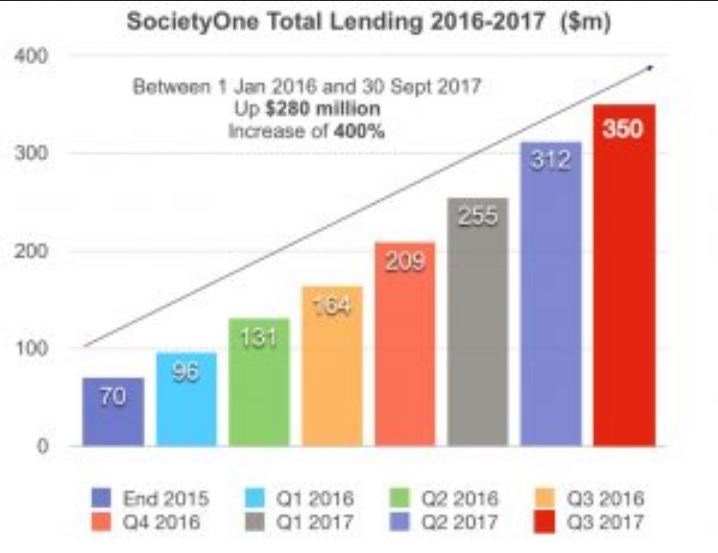Australia’s pioneering alternative lender, SocietyOne, has reinvented P2P lending for retirees and savers in response to continuing reductions in interest rates, where a growing inability to survive on fixed-term deposit returns is causing an exodus into higher-risk investment options.

Where P2P or marketplace investment options have traditionally been segmented by risk-return tiers, SocietyOne is once again leading with its new “P2P 2.0” model, which provides two completely separate and differentiated offerings for its two key investor categories: individual investors and institutional investors.
Under the new model, institutional investors will access the original P2P product but now at a minimum investment of $10 million, so they gain exposure to a large enough pool of loans to achieve an acceptable level of diversification and risk for the desired return.
Individual investors will instead be offered an entirely new income-managed fund in which investment can now start as low as $50,000, and which will provide a smoothed 6 per cent per annum return, paid monthly and supported by a reserving mechanism, as well as increased liquidity, access, and diversification.
The new model is the next evolution of traditional P2P or marketplace lending, says CEO Mark Jones, and yet again demonstrates SocietyOne’s commitment to a constant process of innovation to meet its customers’ changing needs.
“Being the first P2P lender in Australia, we’ve had many years to build a thorough understanding of our different investor categories’ needs, and hone our investment products accordingly,” said Mr. Jones.
“We’re also conscious of changing economic conditions, such as the all-time-low interest rates pushing a growing number of retirees and savers to invest in more risky products to achieve acceptable returns. We wanted to provide a more diversified, higher-return, and income-producing alternative.”
The Reserve Bank recently cut interest rates back-to-back in June and July of this year, landing them at a historic low of 1 per cent and representing the first back-to-back cut since 2012.
As a result, current average fixed-term deposit yields are now sitting at around 2 per cent and, according to futures markets, are likely to drop by another 0.25 per cent within 6 months with RBA governor Philip Lowe recently telling the House of Representatives “it’s possible we end up at the zero [rate] lower bound”.
Long-term falling yields are forcing the growing pool of retiree savings into higher risk products such as ‘high-income or defensive equity portfolios’ more suited to institutional and professional investors. The significant capital-at-risk nature of these asset classes is often glossed over.
In the event of a further economic downturn, such as a significant global equities correction, these higher-risk options mean Australians who are no longer earning and who require income-based investments could lose a substantial proportion of their savings, according to SocietyOne Chief Investment Officer, John Cummins.
“Current and future market yields are a reflection of a slowing global and local economy. Any further downturn in global growth and trade should lead prudent investors to choose quality yield-based assets and not higher-risk investments,” said Mr. Cummins. The SocietyOne P2P 2.0 “Personal Loans Unit Trust” for individual investors, as it’s named, is currently open to wholesale and professional investors. SocietyOne intends to open it to retail investors in the future.







